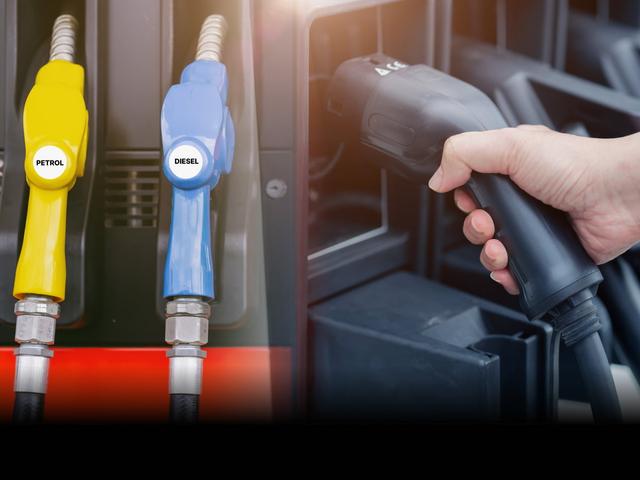


Blink blink !
Its almost here


How to choose the best engine oil for your car: Ultimate guide
- 1Engine oil forms the lifeline of an engine’s moving components
- 2Manufacturer recommendations offer the most suitable engine oil grade for your car
- 3Older engines traditionally use mineral oils vs modern engines prefer synthetic oils
- Importance of engine oil in car performance
- Understanding engine oil basics
- Factors to consider when choosing an engine oil
- How to read engine oil labels
- Mineral vs. synthetic oils: Which is better?
- How climate affects engine oil selection
- Top engine oil brands and recommendations
- Common Myths About Engine Oils
- Conclusion
Engine oil, essentially, is the bloodstream of an engine. Choosing the best engine oil for your car is a crucial decision that directly impacts your vehicle’s performance. Just as human blood performs various functions for our bodies, the engine oil performs several essential functions for the engine, including lubrication, heat regulation and cleaning of combustion residues. Yet, with so many different types of engine oils available on the market, each with its own specifications, ratings, and performance characteristics, it can be overwhelming for you to choose and determine which oil is the best fit for your vehicle.
With the help of this guide, CARS24 will help you understand and explore everything you need to know about the best engine oil for your car. Whether you drive a sedan, SUV, or a sports car, we will help you make an informed choice to select an engine oil that’ll keep your car running in optimal condition.
Importance of engine oil in car performance

The primary role of engine oil for your car engine is the lubrication of moving components. Engine oil plays a vital role in maintaining your car’s performance by reducing friction between moving parts like pistons, crankshafts, etc. Some of the benefits of a good engine oil for your vehicle would be –
- Proper lubrication that not only helps maintain a high level of engine performance but also helps minimise wear and tear of the internal components of the engine.
- It helps to cool the engine by acting as a carrier for heat that’s generated due to friction.
- The slick nature of an engine oil along with other chemicals in it also helps remove contaminants.
- Engine oil even creates a seal between piston rings and cylinder walls to enhance the engine’s thermal and mechanical efficiency.
Thus, engine oils perform a multi-function role in the upkeep of engine functioning and performance. Poor-quality or unsuitable engine oil for your car engine can lead to a range of issues, from overheating to frictional engine damage, which is why selecting the right oil is critical for optimal performance and engine health.
Understanding engine oil basics
Before selecting the best engine oil for your car engine, it is vital to understand the basics of what make up various engine oils. There are different standards that are in place to certify engine oils and there are different types of engine oils that may better suit your car engine. Lastly, different engine oils have different viscosities and are designated by a code that should be understood well before choosing an engine oil compatible with your car engine. Always refer to your car manufacturer’s manual to find the correct standard recommended for your vehicle.
What is engine oil?
In simpler terms, engine oil is a lubricant designed to protect the moving parts inside an engine. It helps reduce friction, which in turn minimises wear and heat buildup. Additionally, engine oil performs other duties like carrying heat away from the engine and trapping dirt and other contaminants, preventing them from building up on the parts and causing damage. Over time however, engine oil degrades and its properties diminish, which is why regular oil changes are necessary to maintain optimum engine performance.
Engine oil standards
API – The American Petroleum Institute (API) developed a standard to classify products based on several factors, including dispersive and detergent properties, as well as protection against wear, oxidation, and corrosion. The classification uses two letters, the first being “S” for petrol engines and “C” for diesel engines. The second letter represents the oil’s performance, with latter letters in the alphabet indicating higher quality. For instance, an “SH” rated oil would be meant for petrol engine cars and is of lower performance than an engine oil rated as “SN”.
ACEA – This standard has been set by the European Automobile Manufacturers’ Association (ACEA) and serves as a quality indicator represented by a letter and a number (e.g A1). The letter signifies the type of engine and is designated by –
- A for petrol engines
- B for diesel engines in passenger cars
- C for light vehicle engines with catalytic converters or particulate filters
- E for heavier commercial vehicles and trucks
The number following the letter, specifies the required performance level, with higher numbers indicating better performance.
According to ACEA’s guidelines –
- Three combinations are available for gasoline and diesel engines – A3/B3, A3/B4, A5/B5
- Five categories are applicable to vehicles with emission control devices – C1, C2, C3, C4, C5
- Four categories are for commercial vehicles and trucks – E4, E6, E7, E9, with E6 and E9 designed for vehicles with emission control systems.
SAE – Set by the Society of Automotive Engineers (SAE), this standard defines the viscosity of the oil. It is shown on the oil container in “00W00” format and you may have seen this standard as “5W30”, “10W40” etc. These may also be referred to as oil weights where 5 or 10 are referred to as 5 weight oil or 10 weight oil for lower temperatures and 30 or 40 weight oil as indicators for higher temperature viscosity. Here, the initial number represents the viscosity of the engine oil at low temperatures, with lower numbers indicating better performance in cold conditions. The latter number reflects the oil’s performance at higher temperatures, with higher numbers indicating greater efficiency in hot conditions.
JASO – The Japanese Automobile Standards Organization (JASO) is an industry body responsible for setting lubricant standards for a wide range of Japanese equipment. JASO’s small engine specifications have been widely recognized and adopted globally. They serve as key performance benchmarks for both 2-stroke and 4-stroke engines. These standards are used by oil manufacturers and many original equipment manufacturers (OEMs) worldwide as a foundation for their performance requirements. Since all modern car engines use the 4-stroke cycle, JASO introduced the T903 standard in 1998 as a global benchmark for 4-stroke engines. This specification is aimed to address issues like clutch slippage, ensure the right balance between engine durability and protection by regulating the detergent percentage in the oil, and improve fuel efficiency.
These standards can come across as confusing so the most relevant standard for choosing the best engine oil for your car would be the SAE code. This is the code that determines the viscosity of the engine oil.
Viscosity grade
.jpg)
Viscosity refers to how thick or thin the oil is and how easily it flows at different temperatures. This greatly impacts performance as the wrong viscosity oil may not be able to provide adequate engine protection and in some cases, lead to engine failure. The viscosity grade of an engine oil is dictated by the SAE standard and as mentioned above, is indicated by an alphanumeric code that defines the oil grade like 5W30 or 10W40. The “W” here stands for winter, and the number before it indicates the oil’s viscosity at low temperatures, while the number after the “W” shows its viscosity at high temperatures. The right viscosity ensures your engine is protected in both hot and cold conditions. Thus it’s vital to choose an engine oil that corresponds to your driving conditions and general climatic conditions that your vehicle is operated in.
Types of engine oils: Mineral, synthetic, semi-synthetic

Mineral engine oil – This is derived from crude oil and is the most basic form of engine oil. It is affordable but offers limited performance benefits. Mineral oils are widely used in car engines and are still recommended for older cars.
Synthetic engine oil – It is designed in labs to blend various additives and chemicals that work together to offer better protection against friction, regulate thermal efficiency, and improve longevity of the internal components. Fully synthetic engine oils perform well in extreme temperatures and provide superior engine protection. This is also why any engine using fully synthetic oil will have longer service/oil change intervals.
Semi-synthetic engine oil – A blend of mineral and synthetic oils, semi-synthetic offers a balance between performance and cost. It’s better than mineral oil but not as advanced as full synthetic. These oils are great as transitional oils from mineral oils to more modern blends for relatively older engines. They help these engines run cleaner by introducing detergents that reduce the build up of combustion residues.
Factors to consider when choosing an engine oil
As engine oils manufacturers differ their product’s compositions based on their intended use. We’ve listed down some factors that help you make the best choice for your car.
Vehicle manufacturer recommendations
Your car’s manufacturer provides specific oil recommendations, typically found in the owner’s manual. This includes the preferred viscosity grade and type (synthetic, semi-synthetic, or mineral) based on the engine design and intended usage. Most modern engines have now switched to fully synthetic engine oil blends with the aim of having less frequent oil change intervals, aside from improved engine functioning.
Driving conditions
The type of driving you do can impact the type of engine oil that’s best for your car. City driving in hot climates with frequent starts and stops generates more heat and stress on the engine components. This leads to increased wear, thus making synthetic oils with higher thermal stability ideal for such driving conditions. For highway usage or driving conditions that demand higher torque and/or performance, like off-road driving, oils with high detergents and longer-lasting protection are preferred. Older cars that do not run daily or infrequently would be better suited to mineral oils.
Age and mileage of your car
For newer cars, synthetic oil is often recommended due to its long-lasting, superior protective properties. For older vehicles or those with high mileage, you may want to consider oils which contain additives to reduce leaks from seals and gaskets while also protecting ageing engine components.
How to read engine oil labels

We’ve previously touched upon the topic and as mentioned before, the SAE grading system is widely followed to classify engine oils based on their viscosity. The viscosity is what you’ll probably notice first on the label after the branding as this information is often highlighted by the engine oil manufacturer.
Decoding viscosity grades and their intended use
We’ve previously touched upon the topic and as mentioned before, the SAE grading system is widely followed to classify engine oils based on their viscosity. A common example would be as follows –
5W30/0W30 etc. – Suitable for colder climates due to its low-temperature flow properties. These are ideal for vehicles driven in varying temperature conditions across the year that can have harsh winters and moderate summers. These oils are capable of providing engine protection in cold starts and maintain a decent level of viscosity in high temperatures.
10W30/15W40/20W50 etc. – These are a thicker blend of oil suitable for warmer climates, providing better protection in high-heat running conditions. If you live in tropical areas with extreme summer temperatures or limited colder months, these oils perform well in maintaining viscosity and are ideal for high-temperature running including high-performance usage.
Mineral vs. synthetic oils: Which is better?
Mineral oils
| Pros | Cons |
|
|
Synthetic oils
| Pros | Cons |
|
|
When to choose synthetic over mineral oil
- Synthetic oils are the better choice for high-performance cars, extreme climates, or vehicles that clock high mileage over a year. They offer longer-lasting protection and better performance in both cold starts and high temperatures, making it ideal for modern engines. Longer change intervals also helps offset their higher costs.
- Mineral oils may be suitable for older cars with simple engines, relatively low rpm operations or when cost is a significant concern. A good compromise is selecting a semi-synthetic engine oil that blends the properties of synthetic and mineral oils to offer a better cost to performance ratio for older engines.
How climate affects engine oil selection
Cold climates: Benefits of low-viscosity oil
In cold environments, low-viscosity oils like 5W30 and 0W30 are ideal because they’re thinner and flow more easily when the engine is cold, reducing wear during startup. These oils remain thin enough to circulate quickly when the engine operating temperatures are low and retain their viscosity when the engine reaches optimal operating temperatures. They will not perform well and break down easily when ambient temperatures and engine operating temperatures are high.
Hot climates: Choosing the right high-viscosity oil
For hotter climates, oils with higher viscosity ratings like 10W40 and 15W50 are better as they maintain their thickness at high temperatures. They provide better protection and prevent engine wear in such conditions, maintaining a good flow rate and circulation to the engine internals. These oils are designed to handle the thermal stress of hot weather hence their thickness and slow flow rate at lower temperatures may be harmful for engines operating in colder regions.
Top engine oil brands and recommendations
| Brand | Key Features | Best For |
| Mobil 1 | Superior synthetic formula, excellent protection | Sports cars, high-performance engines |
| Castrol Edge | Titanium technology for strength under pressure and friction reduction | Sedans, SUVs, high mileage operations |
| Shell Helix Ultra | PurePlus technology, great for fuel efficiency | Daily commuters, highway driving |
| Valvoline | Enhanced wear protection and detergents | Older cars, off-road vehicles |
| Total Quartz | Excellent cold-start performance | Cold climates, city driving |
Best engine oils for different car types
Sedans: Castrol Edge 5W-30 for balanced protection and fuel efficiency.
SUVs: Mobil 1 10W-40 for durability under load and varied driving conditions.
Sports cars: Shell Helix Ultra 5W-40 for superior performance in a wide range of operating temperatures and at high rpm usage.
Common Myths About Engine Oils
| Myth | Fact |
| You should change the engine oil every 5,000 kilometres | While true for older engines running mineral oils, most modern semi-synthetic and synthetic engine oils last longer, and can run for 10,000 - 15,000 kilometres between changes |
| Thicker oil is better for your car engine | Not always. The right viscosity entirely depends on your car’s specifications and driving conditions |
| Synthetic oil causes leaks in older engines | Modern synthetic oils are safe for older engines if the right grade is used |
| You can’t switch between synthetic and mineral oil | You can switch between oil types, as long as the oil meets the manufacturer’s recommended specifications for your engine |
| Oil additives boost engine performance | Most quality oils already contain the necessary additives. Additional products are often unnecessary and could even harm engine performance |
Conclusion
Choosing the right engine oil for your car is essential for maintaining its performance, longevity, and overall working efficiency. By understanding the basics of engine oil, decoding the labels, and considering factors like driving conditions and climate, you can make an informed decision that benefits your vehicle. Whether you opt for mineral oil or synthetic or even select a semi-synthetic engine oil, selecting the right viscosity and quality can prevent engine wear, improve fuel efficiency, and ensure your engine runs smoothly. With numerous reputable brands on the market, you have plenty of options to find the perfect engine oil for your car. Always prefer to go with the manufacturer’s engine oil recommendations and consult the service centre if you decide to switch grades.
Have a specific brand of engine oil that you swear by for all your cars? Share your choices on the CARS24 auto community, CLUTCH, where there are more interesting automotive discussions taking place.
Frequently Asked Questions
Expand all

Blink blink !
Its almost here













.jpg&w=640&q=75)









Blink blink !
Its almost here











